 W
WBéla Nagy Abodi was an Hungarian painter, and professor of the Academy of Fine Arts in Cluj-Napoca. That studied at Belle-Arte Academy and ended up being at the Hungarian Academy of Fine Arts. He spent 5 years in the Hungarian army then imprisoned as a war prisoner in Russia. He eventually ended up being a teacher at the same academy. He studied in the class of Camil Ressu at the Academia de Belle-Arte in Bucharest, and then went to the Hungarian Academy of Fine Arts in Budapest, as a student of István Szőnyi.
 W
WGheorghe Asachi was a Moldavian, later Romanian prose writer, poet, painter, historian, dramatist and translator. An Enlightenment-educated polymath and polyglot, he was one of the most influential people of his generation. Asachi was a respected journalist and political figure, as well as active in technical fields such as civil engineering and pedagogy, and, for long, the civil servant charged with overseeing all Moldavian schools. Among his leading achievements were the issuing of Albina Românească, a highly influential magazine, and the creation of Academia Mihăileană, which replaced Greek-language education with teaching in Romanian. His literary works combined a taste for Classicism with Romantic tenets, while his version of the literary language relied on archaisms and borrowings from the Moldavian dialect.
Auguste Baillayre was a painter from France. He was a professor at Ecolle de Belle Arte of Chişinău and the first director of the National Museum of Fine Arts, Chişinău.
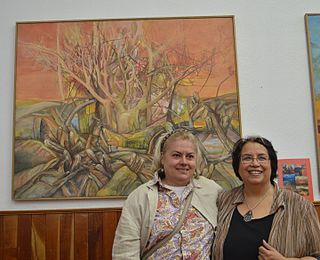 W
WSilvia Barbescu is a Romanian multi-disciplinary artist who has been developing her career in Mexico since 2000, after being invited to the country by the Mexican government. Preferring to work with mixed media and mixed techniques, with images based on nature, her work has been recognized by various awards as well as membership in the Salón de la Plástica Mexicana and the Sistema Nacional de Creadores de Arte in Mexico.
 W
WZsolt Bodoni is a Hungarian painter who lives and works in Oradea, Romania.
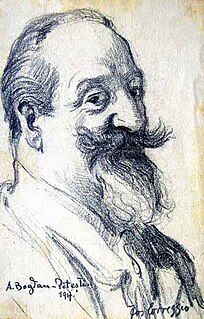 W
WAlexandru Bogdan-Pitești was a Romanian Symbolist poet, essayist, and art and literary critic, who was also known as a journalist and left-wing political agitator. A wealthy landowner, he invested his fortune in patronage and art collecting, becoming one of the main local promoters of modern art, and a sponsor of the Romanian Symbolist movement. Together with other Post-Impressionist and Symbolist cultural figures, Bogdan-Pitești established Societatea Ileana, which was one of the first Romanian associations dedicated to promoting the avant-garde and independent art. He was also noted for his friendship with the writers Joris-Karl Huysmans, Alexandru Macedonski, Tudor Arghezi and Mateiu Caragiale, as well as for sponsoring, among others, the painters Ștefan Luchian, Constantin Artachino and Nicolae Vermont. In addition to his literary and political activities, Alexandru Bogdan-Pitești was himself a painter and graphic artist.
 W
WCecilia Cuțescu-Storck was a Romanian painter with a strong influence on cultural life in the interwar period. She was a promoter of Feminism, contributing to the establishment of the "Association of women painters and sculptors" and "Feminin artistic circle".
 W
WAlexandru Darida is an artist known for his pioneering social activist art. His work includes oil paintings, drawings, and acrylic sculpture that speak to such diverse subjects as the promotion of stem cell research and the politically charged relationship of man with nature.
 W
WȘtefan Dimitrescu was a Romanian Post-impressionist painter and draftsman.
 W
WNatalia Dumitresco was a French-Romanian abstract painter associated with the Réalités Nouvelles salon of Paris after the Second World War, a movement influenced by the art of Wassily Kandinsky and Alberto Magnelli. Other abstract expressionist painters associated with the Réalités Nouvelles include Serge Poliakoff and Alexandre Istrati. Dumitresco later married Alexandre Istrati
Dumitru Gorzo is a Romanian contemporary artist. Born in Ieud, Romania, he currently lives and works in Bucharest and Brooklyn, New York.
 W
WDinu-Alexandre Grigoresco was a Romanian-born French painter.
 W
WNicolae Grigorescu was one of the founders of modern Romanian painting.
 W
WErnő Grünbaum was a Transylvanian-Hungarian painter, graphic artist, lithographer and illustrator. He worked in a variety of styles, including Art Nouveau, Expressionism and Cubism.
 W
WPetre Hârtopeanu was a Romanian-German painter and art professor.
 W
WCorneliu Ionescu is a Romanian painter, famous for his ballerinas.
 W
WIosif Iser was a Romanian painter and graphic artist.
 W
WStefan Jäger was a painter known for his depiction of and deep identification with the Danube Swabian community to which he belonged.
 W
WMyra Landau was an artist and abstract painter involved in art research. Born in Bucharest, Romania, she was known largely for the work she made in Brazil, then Mexico for many years and later in Italy, Israel and The Netherlands.
 W
WȘtefan Luchian was a Romanian painter, famous for his landscapes and still life works.
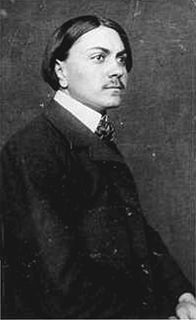 W
WJános Mattis-Teutsch or Máttis-Teutsch, Mátis-Teutsch was a Hungarian painter, sculptor, graphic artist, art critic, and poet. Best known for his Seelenblumen ("Soulflowers") cycle of paintings, he was an important contributor to the development of modern art and avant-garde trends inside Romania. He was the grandfather of the artist Waldemar Mattis-Teutsch.
 W
WRudolph Friedrich Miess was an Imperial Austrian-born Romanian painter from the Transylvania region. Although he did numerous portraits, he is best known for his landscapes, which combine the Academic and Impressionist styles.
 W
WEugen Mihăescu is a Romanian painter and politician. He is a member of the Greater Romania Party and was a Member of the European Parliament from 1 January 2007, date of the accession of Romania to the European Union, until 20 May 2007. While in the European Parliament, he was the vice-chair of the far-right Identity, Tradition and Sovereignty group.
 W
WTeodor Moraru was a contemporary Romanian painter.
 W
WGeorgeta Năpăruș was a Romanian modernist painter.
 W
WAlexandra Nechita is a Romanian-American cubist painter and philanthropist. She was dubbed the "Petite Picasso" by the media and the art community and is widely acclaimed for her paintings and vision of art.
 W
WMihai Olos was a Romanian conceptual artist, poet, essayist.
 W
WValeriu Pantazi was a Romanian poet, writer and painter.
 W
WLaura Poantă is a Romanian physician, medical scientist, author, translator, and painter.
 W
WGheorghe Popovici was a Romanian painter and designer in the Academic style.
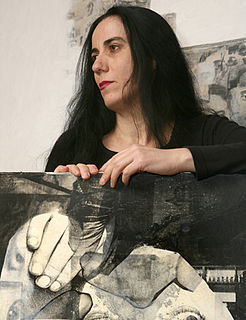 W
WFlorica Prevenda is a Romanian artist, who lives and works in Bucharest, Romania.
 W
WDimitrie Serafim was a Romanian painter in the Academic and Impressionist styles.
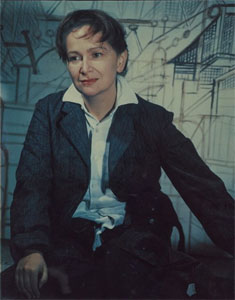 W
WHedda Sterne was a Romanian-born American artist who was an active member of the New York School of painters. Her work is often associated with Abstract Expressionism and Surrealism.
 W
WCarol Szathmari was an Austro-Hungarian-born painter, lithographer and photographer. He is considered the world's first combat photographer for his pictures of the battlefield taken during the first year of the Russo-Turkish war, later known as the Crimean War.
 W
WIon Theodorescu-Sion was a Romanian painter and draftsman, known for his contributions to modern art and especially for his traditionalist, primitivist, handicraft-inspired and Christian painting. Trained in academic art, initially an Impressionist, he dabbled in various modern styles in the years before World War I. Theodorescu-Sion's palette was interchangeably post-Impressionist, Divisionist, Realist, Symbolist, Synthetist, Fauve or Cubist, but his creation had one major ideological focus: depicting peasant life in its natural setting. In time, Sion contributed to the generational goal of creating a specifically Romanian modern art, located at the intersection of folk tradition, primitivist tendencies borrowed from the West, and 20th-century agrarian politics.
 W
WNicolae Tonitza was a Romanian painter, engraver, lithographer, journalist and art critic. Drawing inspiration from Post-impressionism and Expressionism, he had a major role in introducing modernist guidelines to local art.
 W
WLeon Viorescu was a Romanian painter.
 W
WLascăr Vorel was a Romanian Post-Impressionist painter whose style was linked to Expressionism. He was the scion of a pharmacist clan in Piatra Neamț, but abandoned the family trade to take up drawing, and became a student at Munich's Academy of Fine Arts. Praised as an intellectual as well as a painter, he moved away from Art Nouveau, studying Cubism and Expressionism, and exchanging ideas with a young Marcel Duchamp. Vorel also worked as a cartoonist for Der Komet magazine, befriending Albert Bloch, Hanns Bolz and Erich Mühsam, and frequenting Café Stefanie.